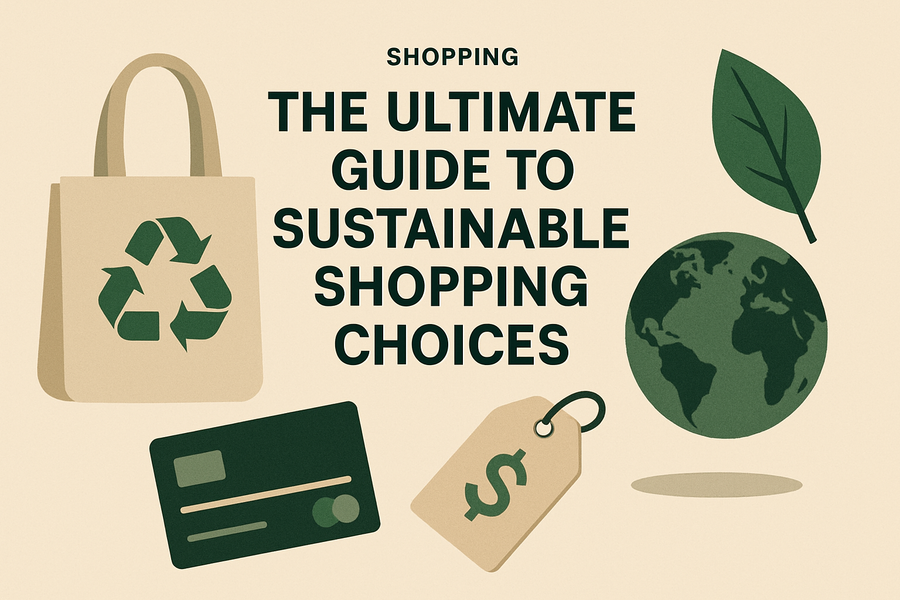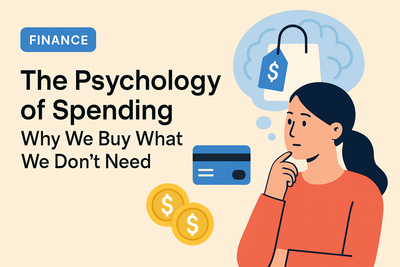
Introduction
In a world where environmental concerns are taking center stage, the way we shop has never been more important. From fast fashion to single-use plastics, our consumption habits have a massive impact on the planet. But here’s the good news: making smarter, more sustainable shopping choices is easier than you might think—and incredibly impactful.
In this guide, we’ll explore how you can align your purchases with your values, support ethical businesses, and reduce your carbon footprint—all while still enjoying the thrill of the hunt for great products.
What is Sustainable Shopping?
Sustainable shopping means making purchasing decisions that prioritize environmental health, social responsibility, and economic fairness. It involves considering the entire lifecycle of a product—from how it's made to how it’s disposed of—and choosing items that minimize harm at every stage.
Key principles of sustainable shopping:
- Buy less, choose better: Focus on quality over quantity.
- Support ethical brands: Look for companies that value fair labor and transparent sourcing.
- Reduce, Reuse, Recycle: Embrace second-hand goods and recycle responsibly.
- Shop local: Reduce carbon emissions by supporting nearby businesses.
Tips for Making Sustainable Shopping Choices
1. Research Before You Buy
Take time to investigate brands before making a purchase. Look for details about their supply chains, materials used, and labor practices. Websites like Good On You and certifications like Fair Trade or B Corp can help you make informed decisions.
2. Prioritize Natural and Recycled Materials
Opt for products made from organic cotton, bamboo, recycled polyester, or biodegradable packaging. These materials typically require fewer resources and create less pollution.
3. Choose Second-Hand and Vintage Items
Thrift stores, consignment shops, and online resale platforms like Poshmark or Depop offer stylish and affordable options without the environmental cost of new production.
4. Bring Your Own Bags and Containers
Whether you're grocery shopping or picking up takeout, bringing reusable bags, jars, and containers can significantly cut down on single-use plastic waste.
5. Avoid Fast Fashion
Fast fashion may be cheap, but it often comes at a high environmental and human cost. Instead, invest in timeless, versatile pieces that’ll last for years.
How to Spot Greenwashing
Not all eco-friendly claims are genuine. Greenwashing is when a company deceptively markets itself as environmentally friendly. To avoid falling for it:
- Look for third-party certifications
- Read the fine print
- Avoid vague terms like “all-natural” without explanation
Sustainable Shopping for Different Categories
Clothing
Choose brands that use ethical labor, sustainable textiles, and slow fashion principles.
Groceries
Buy local and organic produce, bring your own bags, and buy in bulk to reduce packaging.
Electronics
Purchase refurbished gadgets or from companies with strong repair and recycling programs.
Beauty Products
Look for cruelty-free, vegan products with minimal or recyclable packaging.
Conclusion
Sustainable shopping isn’t about perfection—it’s about progress. Every purchase you make is a chance to vote with your wallet for the kind of world you want to live in. By being mindful, doing your research, and sticking to a few key principles, you can make a significant difference.
So next time you're ready to buy something, pause and ask yourself: Is this purchase kind to the planet and its people? If the answer is yes, you’re on the right track.
Happy sustainable shopping!







